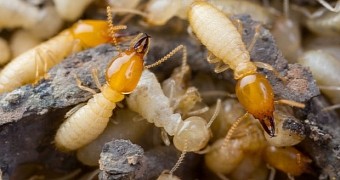Asian and Formosan subterranean termites, which happen to be two of the most destructive termite species the world has ever seen, are the stars of a heated love affair playing out in Florida, US.
Thus, in a recent paper in the journal PLOS ONE, researchers detail how representatives of the two species are now hooking up surprisingly often and even producing hybrid colonies.
Specialist Thomas Chouvenc and colleagues fear that, the more common such hybrid specimens become, the greater economic losses attributed to termites will be reported in Florida.
How the love affair got started
Formosan termites and Asian termites are both invasive species in the US. It is believed that it was cargo shipments that brought them to this corner of the world a few decades back.
For quite a while, the species kept their distance from one another, seeing how they were in the habit of mating during different times of the year, University of Florida researcher Thomas Chouvenc explains.
At one point, however, they synchronized their schedules. As a result, Formosan termites found themselves mating with Asian termites and birthing hybrid offspring.
“Both species have evolved separately for thousands of years, but in South Florida, they now have the opportunity to meet, mate and start new hybrid colonies,” scientists say.
Even weirder, experiments carried out in laboratory conditions suggest that, now that the two species are well acquainted with one another, Asian male termites actually prefer Formosan females.
Because of this, the risk of having hybrid termite colonies become a common sight in Florida is even greater, specialist Thomas Chouvenc and his team write in the journal PLOS ONE.
Why worry about these hybrid termites?
As mentioned, Formosan and Asian termites are among the world's most destructive species. It is estimated that, each year, they cause economic losses amounting to $40 billion (€36.5 billion).
What specialists fear is that their offspring could turn out to be an upgraded version of the two species in terms of viciousness and, therefore, cause twice as much damage.
“The establishment of hybrid termite populations is expected to result in dramatically increased damage to structures in the near future,” Thomas Chouvenc said in a statement.
Presently, the University of Florida scientist and colleagues are trying to figure out whether the hybrids that are the love children of Formosan and Asian termites are fertile and can have babies of their own.
If they are, they might just create a population big and strong enough to leave Florida and move on to setting up camp in neighboring states, maybe all across the US.

 14 DAY TRIAL //
14 DAY TRIAL //